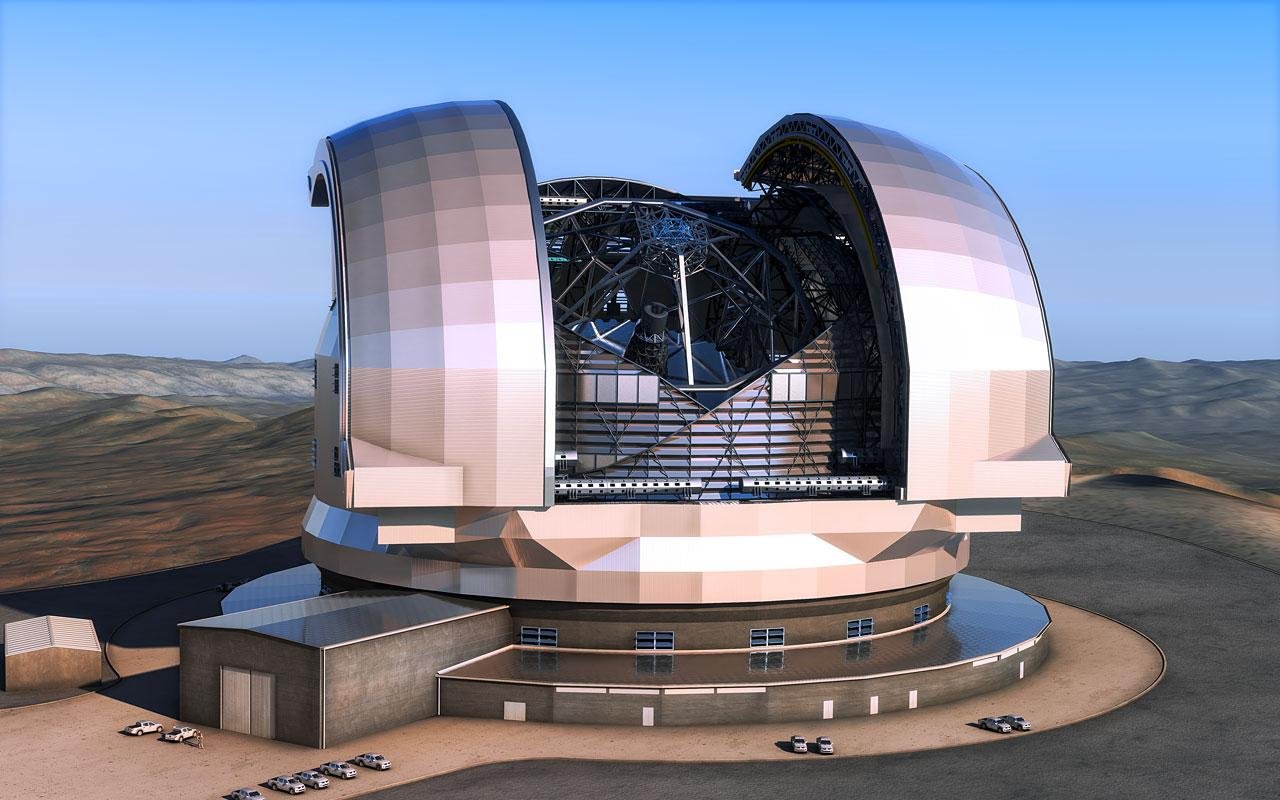Every week, TecMundo and #AstroMiniBR bring together five relevant and entertaining astronomical curiosities produced by the world’s collaborators. twitter profile to spread the knowledge of this science, which is the oldest. Check it out below!
#1: ELT: another super telescope is coming!
Currently under construction in Chile’s Atacama Desert, this scientific giant promises to revolutionize our understanding of the Universe. By capturing light from distant and faint celestial sources, the ELT will take us to places never imagined, reveal extrasolar worlds, investigate the beginning of cosmic time, and enable astronomers to unravel many scientific mysteries that still remain open.
Its unique resolution will provide sharp and detailed images, enabling advanced studies of the formation of stars, planets and star systems in our galaxy and other distant galaxies. The cosmos study is about to gain a new chapter!
#2: An Observatory we can call ours!
Astronomy doesn’t just live from big alien telescopes! The Pico dos Dias Observatory (OPD) is one of the jewels of Brazilian astronomical science! Located in Pico dos Dias, Minas Gerais, at 1,864 meters above sea level, OPD was founded in 1980 and is managed by the National Astrophysical Laboratory (LNA). Southern Hemisphere.
Its main features include a privileged location away from major urban centers and with a favorable climate that provides excellent conditions for high precision astronomical observations. The main scientific goals of OPD cover various fields of astronomy, such as exoplanet studies, variable star studies, galactic formation and evolution studies, as well as studying the structures of the solar system.
With a team of qualified researchers and state-of-the-art equipment, OPD has performed throughout its decades of operation. A key role in the advancement of astronomical knowledge by contributing to the strengthening of science in Brazil and around the world!
#3: A cosmic kiss among the stars
On the cosmic stage, a fascinating spectacle plays out: binary stars in contact, an inseparable couple whose close orbits keep them in a perpetual gravitational embrace.
In this type of system, both stars share their atmospheres and in some cases even exchange matter to create a star ballet of striking color and shine.. This synchronized dance between nearby stars offers astronomers a unique opportunity to study stellar properties in greater detail.
By observing the changes in brightness caused by mutual eclipses or interactions between their atmospheres, scientists can determine the masses, sizes and temperatures of binary stars with greater accuracy.
In addition to their scientific appeal, these binary stars also teach us about the complexity and diversity of the cosmos. Their gravitational interactions can affect stellar evolution and even result in disasters such as supernova explosions and the formation of neutron stars!
#4: Different tendencies of the planets
Planets in the Solar System do not rotate in the same way in space, but instead have different tilts in their axes of rotation due to the initial conditions of their formation and how they evolved over time.
During the process of planetary accumulation, various gravitational interactions and collisions occurred when planets formed from material in orbit around the Sun. which resulted in different orientations for the rotation axes.
Over time, mutual gravitational effects with other celestial bodies such as moons and planets also contributed to changes in the tilts of the planets’ rotation axes, forming the pattern we observe today. These variations have significant effects on weather patterns and the formation of seasons on planets, making each planet unique in its geography and atmosphere.
#5: The beauty of the Orion Nebula
The Orion Nebula, also known as M42, is one of the most spectacular and fascinating astronomical objects in the night sky. Located about 1,344 light-years from Earth in the constellation of Orion, this cosmic cloud is an active star forming region containing a cluster of massive young stars that illuminate and energize the surrounding gas and dust.
Its shimmering beauty can even be seen with the naked eye, especially in areas with low light pollution, where it appears as a hazy, fuzzy speck in the sky, almost like a cloudy star. But the true image of this celestial phenomenon is revealed through binoculars or a telescope. It allows the observation of impressive details such as the intricate structures and vibrant colors found in the Orion Nebula.!
Did you like the content? So keep a close eye on more topics like this on TecMundo and take the opportunity to learn about the so-called supernova that nearly destroyed the Solar System.
Source: Tec Mundo
I’m Blaine Morgan, an experienced journalist and writer with over 8 years of experience in the tech industry. My expertise lies in writing about technology news and trends, covering everything from cutting-edge gadgets to emerging software developments. I’ve written for several leading publications including Gadget Onus where I am an author.













